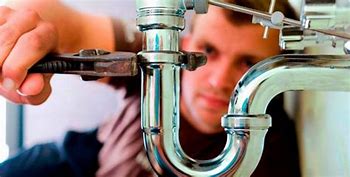Avoid These 5 Common Mistakes When Installing a Pressure Tank

Installing a pressure tank for your water system is essential for maintaining consistent water pressure, reducing pump cycling, and extending the life of your water pump. However, even seasoned DIYers and professionals can make critical mistakes during installation that compromise the efficiency and longevity of the system. If you’re considering installing a pressure tank yourself or overseeing the work, being aware of common pitfalls can save you time, money, and future headaches.
Here are five common mistakes to avoid when installing a pressure tank—and what you should do instead.
Mistake #1: Choosing the Wrong Size Tank
One of the most frequent and costly mistakes is selecting a pressure tank that’s too small (or in rare cases, unnecessarily large) for your water system needs.
Why It Matters:
The size of your pressure tank directly affects how often your pump turns on and off. A tank that’s too small will cause the pump to cycle more frequently, leading to premature wear. On the flip side, an oversized tank might take up more space and money without offering additional benefit.
The Right Approach:
Choose a tank size based on your household’s peak water usage and the pump’s flow rate. As a rule of thumb, your tank should provide at least one gallon of drawdown (usable water per cycle) for each gallon per minute (GPM) your pump produces. For example, if your pump delivers 10 GPM, you need a tank with at least 10 gallons of drawdown capacity.
Drawdown capacity depends not only on tank size but also on the pressure switch settings. For instance, a tank with a total volume of 40 gallons may provide only 12 gallons of drawdown under a 30/50 PSI pressure setting.
📊 Statistic: According to the National Ground Water Association, proper sizing and selection of tanks and system components can reduce pump cycling by up to 75%, significantly extending system life and improving efficiency.
Mistake #2: Skipping Pre-Charge Adjustments
Many people assume a pressure tank comes pre-set and ready to go, but that’s not always the case. Improper air charge is a leading cause of system failure and inefficiency.
Why It Matters:
A pressure tank uses compressed air and a rubber bladder to regulate water pressure. Before installation, the tank's air pressure (pre-charge) must be adjusted to match your system’s cut-in pressure. If this is overlooked, it can result in poor water pressure or waterlogging (when the tank fills with water and loses air pressure).
The Right Approach:
Always check and adjust the pre-charge before attaching the tank to your system. Use an air pressure gauge to measure the pre-charge at the air valve (located at the top of the tank). Set it to 2 PSI below the cut-in pressure of your pressure switch. So, if your system operates on a 30/50 switch, your pre-charge should be 28 PSI.
Neglecting this step can result in excessive pump cycling or total system failure.
🛠 Pro Tip: Always check the pre-charge when the tank is empty and isolated from the water system.
Mistake #3: Poor Location and Mounting
Where and how you install the pressure tank is crucial for performance, maintenance, and safety. Many homeowners and even some contractors install tanks in inconvenient, unstable, or inappropriate locations.
Why It Matters:
Installing your pressure tank in a location that's difficult to access can make regular maintenance a hassle. Mounting it on an uneven surface can lead to stress on plumbing joints and tank instability. Outdoor installations without proper weather protection can expose the tank to freezing temperatures or UV damage.
The Right Approach:
• Install the tank on a level, solid base such as a concrete slab.
• Ensure enough clearance around the tank for easy access to valves, gauges, and fittings.
• If installed outdoors, protect the tank from freezing temperatures and direct sunlight using an insulated cover or housing.
• Mount it as close to the pump as possible to reduce pressure drop and vibration.
📊 Statistic: A 2023 industry report by Water Systems Council noted that improper installation environments contribute to over 30% of premature pressure tank failures, particularly in regions with extreme temperature variations.
Mistake #4: Ignoring Proper Plumbing and Valves
Another all-too-common issue is faulty plumbing during the installation process—especially skipping essential valves or installing fittings incorrectly.
Why It Matters:
Incorrect pipe fittings or missing key components like check valves, shutoff valves, and pressure relief valves can cause leaks, reduce system efficiency, or pose safety risks. Over time, poorly done plumbing can also lead to expensive repairs or water damage.
The Right Approach:
Here’s a checklist of plumbing best practices:
• Use a check valve to prevent backflow into the pump.
• Install a pressure relief valve as a safety mechanism in case the pressure switch fails.
• Include a shutoff valve between the pressure tank and the house plumbing to facilitate maintenance without shutting down the whole system.
• Use PTFE tape or appropriate thread sealant on all threaded joints to prevent leaks.
• Ensure pipe alignment is clean and straight to avoid joint stress.
Want a visual guide? This comprehensive pressure tank installation guide breaks down proper plumbing layout with diagrams and step-by-step instructions.
Mistake #5: Failing to Test the System After Installation
You've done the hard part—now don’t forget to verify that everything is working correctly. Many installations go awry because the installer assumes it’s “plug and play.”
Why It Matters:
Testing helps catch issues such as:
• Improper air charge
• Incorrect pressure switch settings
• Leaks in plumbing
• Faulty valves
A system might run initially, but unnoticed issues can lead to early failure or inefficiency that accumulates into major repair costs.
The Right Approach:
• Monitor the pressure gauge while turning on the pump to verify correct pressure switch operation.
• Listen for short cycling, which can indicate incorrect pre-charge or sizing.
• Check all joints and valves for leaks.
• Record the pressure readings to establish a baseline for future maintenance checks.
For a step-by-step checklist, check out this helpful resource from Fresh Water Systems, which covers pressure switch calibration and testing tips.
Final Thoughts: Installation Is Half the Battle
Installing a pressure tank may not seem complicated, but doing it improperly can cost you far more in the long run—in terms of both equipment and water system performance. By avoiding these five common mistakes, you’ll be taking a major step toward ensuring your system runs efficiently and reliably for years to come.
Here’s a quick recap of what not to do:
1. Don’t undersize your tank. Choose based on pump output and system demand.
2. Don’t skip pre-charge adjustments. Set air pressure 2 PSI below your system’s cut-in.
3. Don’t install in a bad location. Ensure a level, accessible, and protected site.
4. Don’t neglect valves and fittings. Use quality plumbing components with correct installation.
5. Don’t forget to test. Validate system operation before calling it done.
Pay attention to these details during installation, and your pressure tank will deliver years of reliable service.
________________________________________
Bonus: Maintenance Tips to Keep Your Pressure Tank in Top Shape
Even the best installations require upkeep. Follow these tips for long-term performance:
• Check the tank’s air pressure every 6–12 months.
• Inspect for leaks or corrosion regularly.
• Listen for frequent pump cycling, which may indicate a bladder failure or air loss.
• Flush the system periodically to remove sediment build-up, especially if you have a well.
With proper care, a quality pressure tank can last 10 to 15 years or more.
Note: IndiBlogHub features both user-submitted and editorial content. We do not verify third-party contributions. Read our Disclaimer and Privacy Policyfor details.







